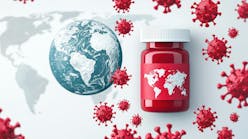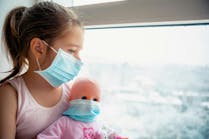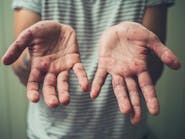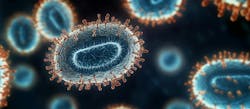Surgical masks reduce COVID-19 spread, large-scale study shows
A large, randomized trial led by researchers at Stanford Medicine and Yale University has found that wearing a surgical face mask over the mouth and nose is an effective way to reduce the occurrence of COVID-19 in community settings, according to a news release from Stanford.
It also showed that relatively low-cost, targeted interventions to promote mask-wearing can significantly increase the use of face coverings in rural, low-income countries. Based on the results, the interventional model is being scaled up to reach tens of millions of people in Southeast Asia and Latin America over the next few months.
The findings were released on the Innovations for Poverty Action website, prior to their publication in a scientific journal, because the information is considered of pressing importance for public health as the pandemic worsens in many parts of the world.
“We now have evidence from a randomized, controlled trial that mask promotion increases the use of face coverings and prevents the spread of COVID-19,” said Stephen Luby, MD, Professor of Medicine at Stanford. “This is the gold standard for evaluating public health interventions. Importantly, this approach was designed be scalable in lower- and middle-income countries struggling to get or distribute vaccines against the virus.”
The researchers also partnered with Innovations for Poverty Action, a global research and policy nonprofit organization.
The researchers enrolled nearly 350,000 people from 600 villages in rural Bangladesh. Those living in villages randomly assigned to a series of interventions promoting the use of surgical masks were about 11% less likely than those living in control villages to develop COVID-19, which is caused by infection with the SARS-CoV-2 virus, during the eight-week study period. The protective effect increased to nearly 35% for people over 60 years old.
Providing free masks, informing people about the importance of covering both the mouth and nose, reminding people in-person when they were unmasked in public, and role-modeling by community leaders tripled regular mask usage compared with control villages that received no interventions, the researchers found.
In the intervention villages, they also saw a slight increase in physical distancing in public spaces, such as marketplaces. This finding indicates that mask-wearing doesn’t give a false sense of security that leads to risk-taking behaviors — a concern cited by the World Health Organization during the early days of the pandemic when its officials were considering whether to recommend universal masking.
There were significantly fewer COVID-19 cases in villages with surgical masks compared with the control villages. (Although there were also fewer COVID-19 cases in villages with cloth masks as compared to control villages, the difference was not statistically significant.) This aligns with lab tests showing that surgical masks have better filtration than cloth masks. However, cloth masks did reduce the overall likelihood of experiencing symptoms of respiratory illness during the study period.
Despite a growing body of scientific evidence that masks reduce the spread of the virus that causes COVID-19, it has been difficult to increase mask-wearing, particularly in low-resource countries and among people living in remote or rural areas. In June of 2020, only one-fifth of Bangladeshis in public areas were wearing a mask that properly covered the mouth and nose despite a nationwide mask mandate that was in effect at the time.
The villages were selected by researchers at Innovations for Poverty Action Bangladesh. The researchers paired 600 villages countrywide based on population size and density, geographic location, and any available COVID-19 case data. For each of the 300 pairs of villages, one was randomly assigned to receive the interventions while the other served as a control and received no interventions. Two-thirds of the intervention villages received surgical masks, while the other one-third received cloth masks. In total, 178,288 people were in the intervention group, and 163,838 people were in the control group.
The interventions were rolled out in waves from mid-November to early January. For eight weeks after the interventions, observers stationed at various public places in both the control and intervention villages recorded whether a person was wearing a mask over both their mouth and nose and whether they appeared to be practicing physical distancing — that is, staying at least an arm’s length away from all other people.
At week five and week nine, villagers were asked if they had experienced any COVID-19 symptoms — including fever, cough, nasal congestion and sore throat — during the previous month and, if so, whether they would provide a blood sample to test for the presence of SARS-CoV-2. About 40% of symptomatic people consented to subsequent blood collection.
The observers found that just over 13% of people in the villages that received no interventions wore a mask properly, compared with more than 42% of people in the villages where each household received free masks and in-person reminders to wear them. Physical distancing was observed 24.1% of the time in control villages and 29.2% of the time in intervention villages.
About 7.6% of people in the intervention villages reported COVID-19 symptoms compared with about 8.6% of those in the control villages during the eight-week study period — a statistically significant difference that indicates a roughly 12% reduction in the risk of experiencing respiratory symptoms.
The researchers found that among the more than 350,000 people studied, the rate of people who reported symptoms of COVID-19, consented to blood collection and tested positive for the virus was 0.76% in the control villages and 0.68% in the intervention villages, showing an overall reduction in risk for symptomatic, confirmed infection of 9.3% in the intervention villages regardless of mask type.
When the researchers considered only those villages that received surgical masks (omitting villages that received cloth masks), the reduction in risk increased to 11%. Furthermore, the protective effect of surgical masks was greater for older people: As a group, those ages 50 to 60 were 23% less likely to develop COVID-19 if they wore a surgical mask, and those over 60 were 35% less likely if they did.
The interventions are now being rolled out in other parts of Bangladesh and in Pakistan, India, Nepal and parts of Latin America.





